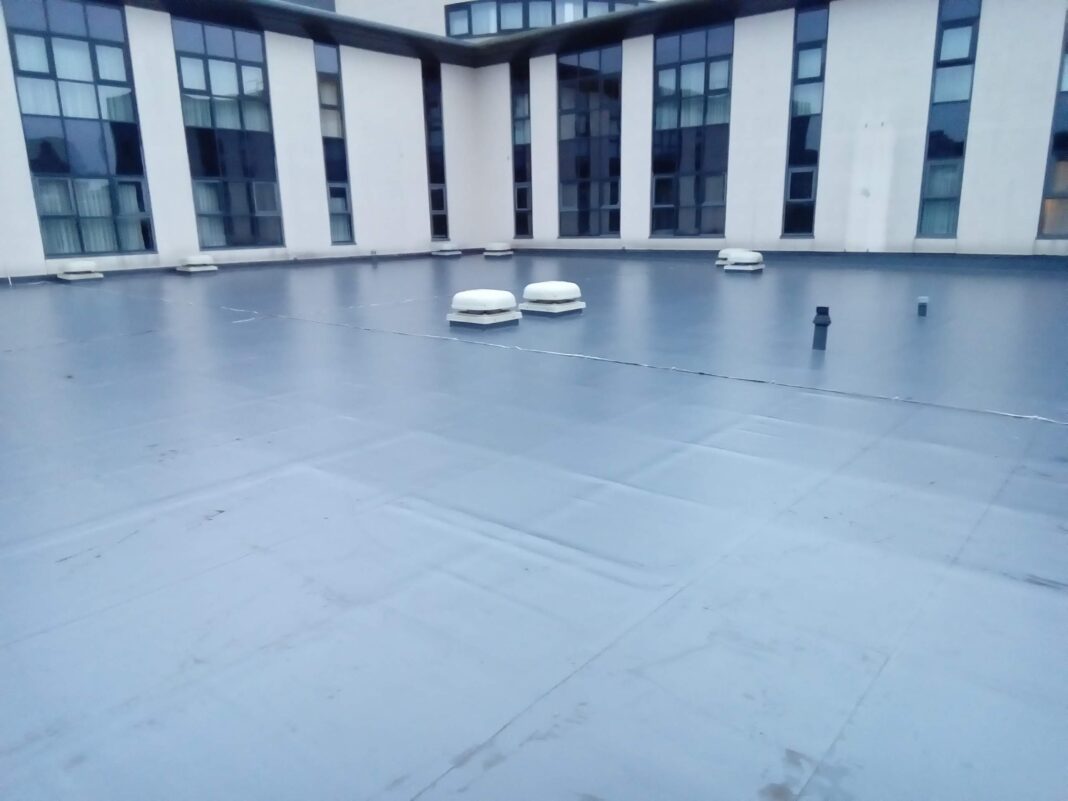
Roof waterproofing is not a game of chance. Errors at any stage of the installation process, particularly avoidable ones, could have costly ramifications. Correct specification also plays a crucial part in ensuring a roof’s protective element fulfils its long-term performance expectation. Therefore, a forensic approach in relation to the planning process is advisable to achieving a basis for success; namely, selecting the right materials for the project in hand. Here, Dave Maginnis, MD at BriggsAmasco, offers a guide to the single-ply systems and installation techniques which help remove waterproofing’s risk element.
For installers, single-ply roofing’s strength lies in its flexibility. The clean, lightweight membranes can be used for a range of applications. Flat or pitched roofs, barrelled, vaulted or vertical surfaces; single-ply is a waterproof solution for commercial and domestic projects large or small; simple or complex.
The system itself comprises one layer of roof waterproofing and offers many benefits to the installer and end user. Quick and easy to apply with the potential to prefabricate, issues regarding the membrane’s durability when it was introduced to the market in the 1980s have long since been overcome. It’s resulted in a high-performance, long-term roofing system that is a perfect fit for 21st century building needs.
Long-term benefits
PVC is a widely-used single-ply option, and one which BriggsAmasco has successfully employed in all manner of situations since the system’s commercial availability. Polymer membranes are joined and detailed using hot air welding. PVC membranes are strong and flexible, with a life expectancy of 30 years or more. Available in a range of colours to suit the end user’s aesthetic tastes, their adaptability enables the introduction of additional works such as walkways, which allow for the easy completion of inspections or site visits. This feature proves particularly useful when part of a commercial application such as a retail or an entertainment complex.
Ethylene propylene diene terpolymer monomer(EPDM) is a synthetic rubber single-ply membrane comprising large sheets which are prefabricated under factory conditions before being transported to site to considerably speed-up installation time. The membrane’s joints are usually adhesive-bonded, giving it superb resistance to weathering, ultraviolet radiation, ozone thermal shock and cyclic fatigue, making it an ideal option for buildings situated in climatic extremes. EDPM has an excellent service life of between 20 and 30 years.
Watertight installation
In terms of installation, the first step for a single-ply roofing contractor is to install the VCL. This is primarily installed to restrict the amount of moisture vapour being transmitted into the roof construction from inside the building. Depending on the type of system used, this may be a loose-laid VCL sealed at the laps or a fully-adhered VCL. It might be that a fully-adhered vapour barrier such as Sika Trocal’s SVap 5000E may be installed in order to make the building watertight as quickly as possible so that work can commence internally. Whichever type is used it is important that it is fully- sealed at all laps, perimeters and penetrations before the insulation is installed to ensure it also acts as an appropriate air barrier.
Next is the insulation. This can either be a flat insulation board or a tapered system and will have different methods of attachment. BS 6229 – flat roofs with continuously supported coverings – is the head code for the design of roofs and states all roof falls should be designed to achieve a minimum finished fall of 1:80. This can either be in the roof construction or within the insulation.
The thickness of the insulation will depend on the results of the thermal calculations carried out on the building and will need to achieve the necessary ‘U’ value, as required by Building Regulations. This is used to limit the amount of heat loss from the building and reduce carbon emissions. Compatibility with the roofing system also needs to be considered, with some insulation being designed for mechanical fastening systems, and others for adhered applications. Insulation requiring mechanical fastening will use thermally-broken fasteners in order to reduce the amount of cold bridging caused by the fasteners, thus reducing the thickness of insulation required.
Of single-ply roofing’s many benefits, perhaps the most obvious to the bystander or passer-by is the aesthetic quality it brings to buildings of all types. At street level, it presents a crisp, clean finish to all sides, whilst from above its uniformity is unencumbered by the array of plant materials its strength and flexibility allows.
Joint effort
A cross-party approach is always advisable when embarking on a project as essential as the roof’s waterproofing aspect. From the designer and main contractor to the roofing company tasked with the installation aspect, a joint and clear understanding of what the specified system needs to achieve provides a cornerstone to success. Even in this modern age, there are no short-cuts to waterproofing excellence. It relies on a tried-and-tested formula practised by construction personnel across the eons: skilled hands and quality material. BriggsAmasco’s experienced roofing teams fulfil one half of that criterion, which is completed with the specification of one of the many high-performance single-ply membranes now available on the roofing market.









